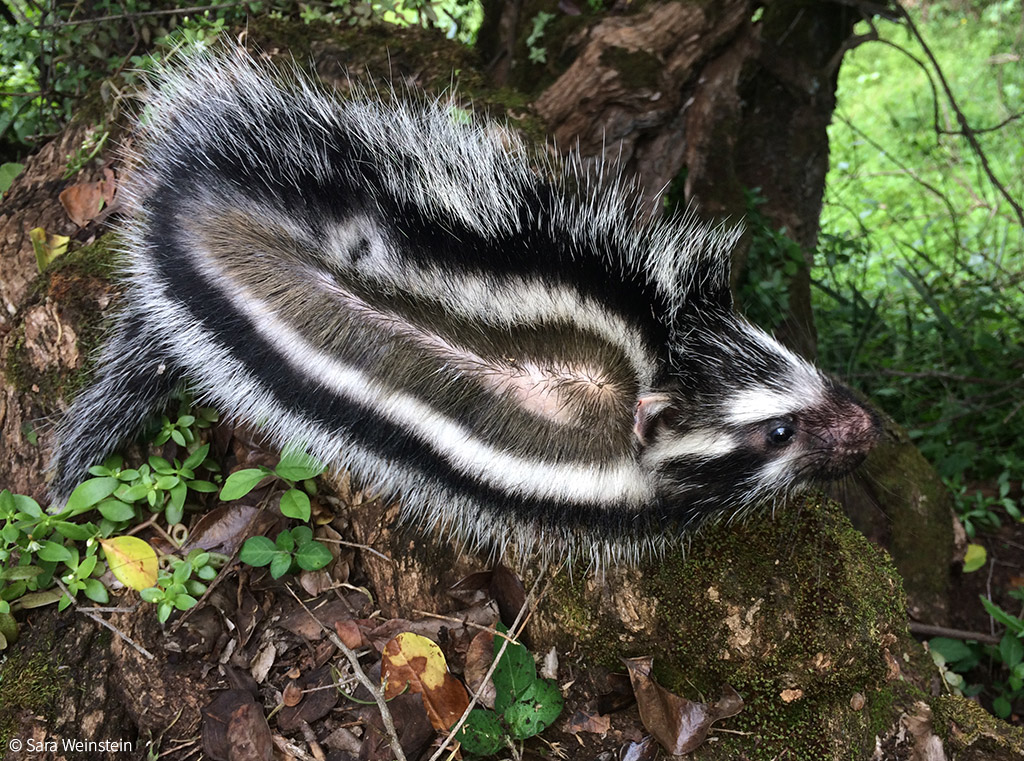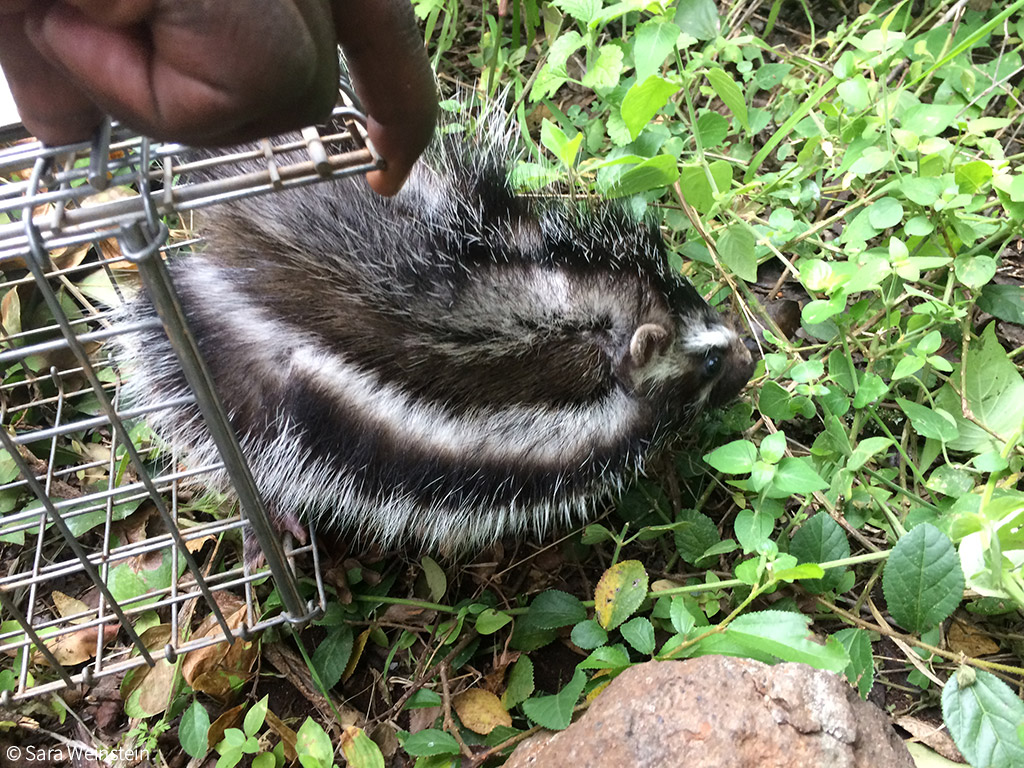
The African crested or maned rat (Lophiomys imhausi) is a unique, nocturnal rodent found only in certain parts of Ethiopia, Sudan, Somalia, Uganda, Kenya and Tanzania. At roughly 30 cm long and weighing up to a kilogram, there is still a great deal to be discovered about these peculiar creatures, and their natural lives remain shrouded in mystery.
Until relatively recently, one such mystery was the reason for their black and white aposematic colouration. Different theories were put forward including mimicry of porcupines or zorillas (striped polecat), and the colouration of the crested rat was long believed to be a rare example of Batesian mimicry in mammals (where an inoffensive creature mimics the looks of one avoided by predators). The crested rat is enveloped in a coat of inconspicuous grey fur, and it is only when threatened or excited in some way that a mane of long, coarse hair erects, parting to expose the glandular area on its flanks surrounded by thick patches of white fur.


Biologists now know the real reason behind this dramatic warning – and predators would do well to heed it. The crested rat actively transfers poison onto its fur in the form of cardiac glycosides. The rodents chew on the bark and leaves of the highly toxic poison arrow tree (Acokanthera schimperi) before transferring a mixture of toxins and saliva specifically to the lateral lines of fur on their flanks. The poison extracted from this particular plant is the same that was used by people in East Africa on their arrows when hunting elephants or other large animals. It is fast-acting and causes paralysis and rapid contractions of the cardiac muscle that can be deadly. Predators that have tackled crested rats have been known to exhibit differing levels of symptoms from foaming at the mouth to severe distress and sudden death.

Upon closer examination, scientists have learned that these hairs are specifically designed to retain the poison and deliver it to an attacker if necessary. The strands are cylindrical and hollow, perforated by several vacuoles to assist with rapid absorption of the poison, which then dries into a semi-viscous substance without losing any toxicity. How the rat can chew the parts of the Poison Arrow Tree without itself being afflicted by the poison is still not entirely understood, but biologists believe that it may be something to do with its large salivary glands and the proteins produced in the saliva itself.

There is only one other close example of this behaviour in mammals: the European hedgehog, which has been known to chew and spread toxic substances from toads onto its quills. However, the toxin used is not nearly as dangerous as that used by the crested rat and this particular trait, combined with an extremely tough skin and reinforced skull, is enough to deter most predators. It has also served to make the African crested rat a generally quite sluggish and slow animal.
In many respects, there is still a great deal to learn about this particular rodent. Individuals in Lolldaiga Hills in Kenya are extensively studied to answer some of the most pressing questions about a mammal that is unique and enigmatic.

To comment on this story: Login (or sign up) to our app here - it's a troll-free safe place 🙂.![]()








